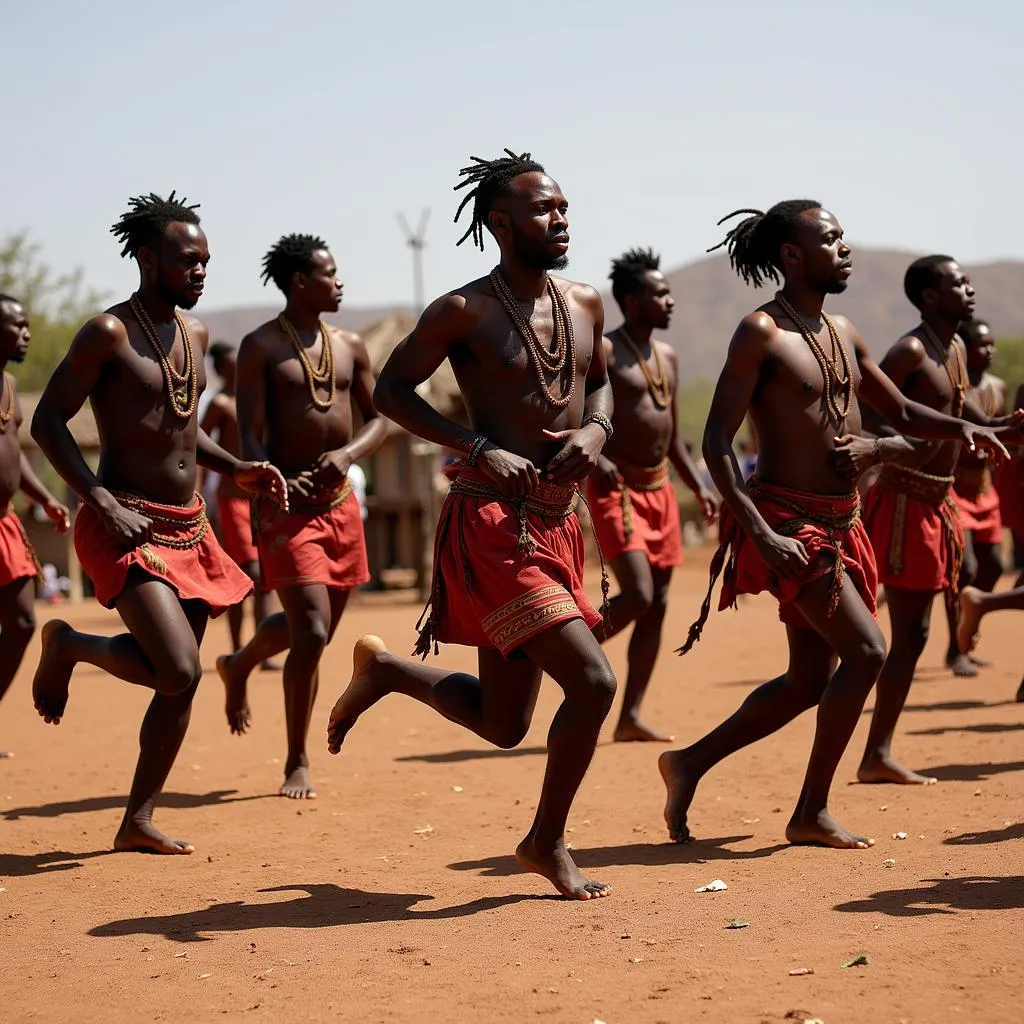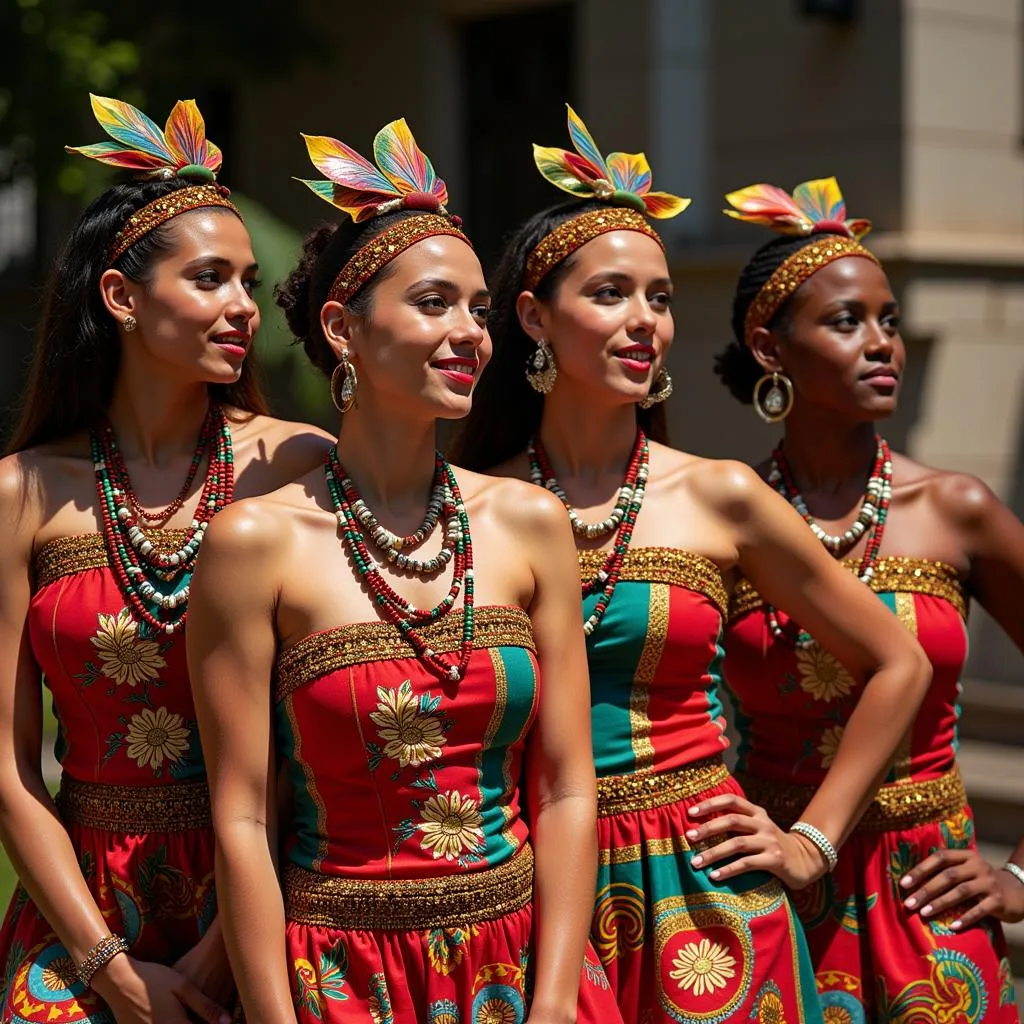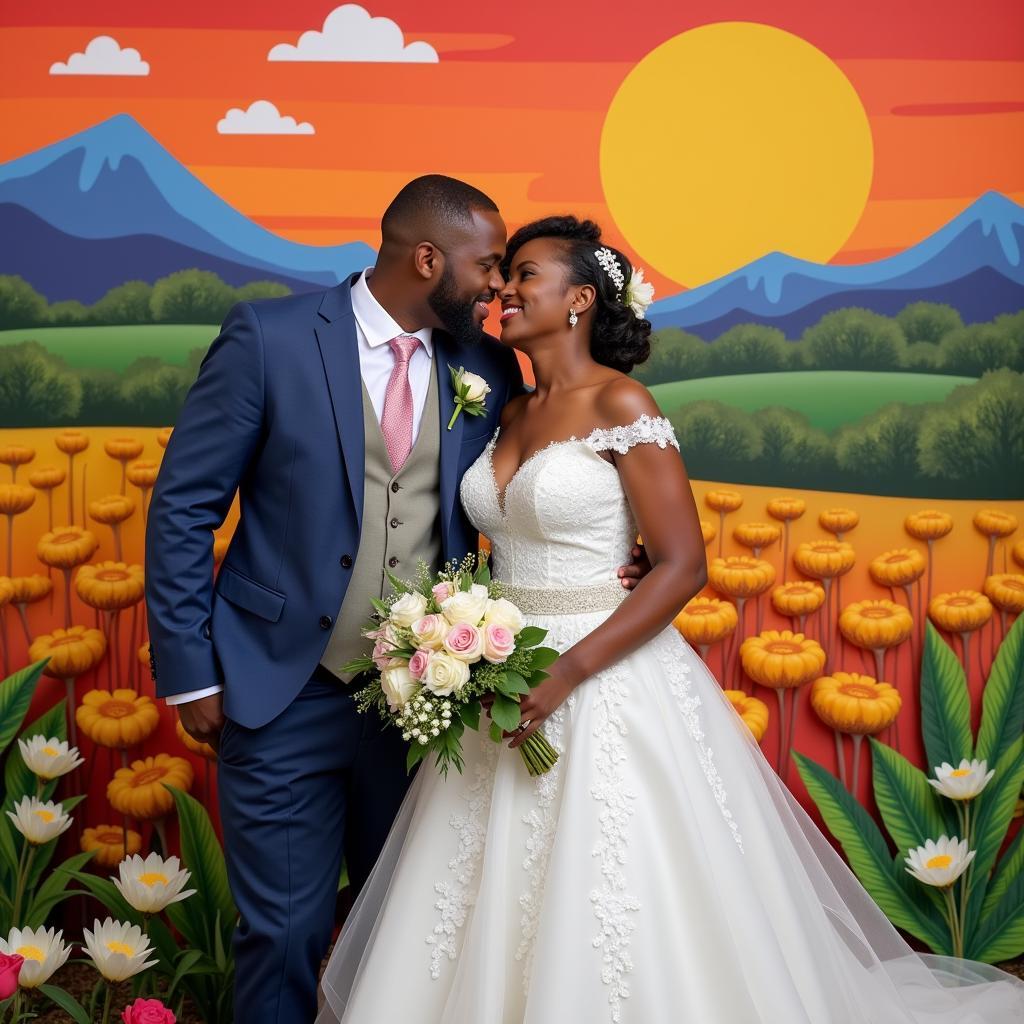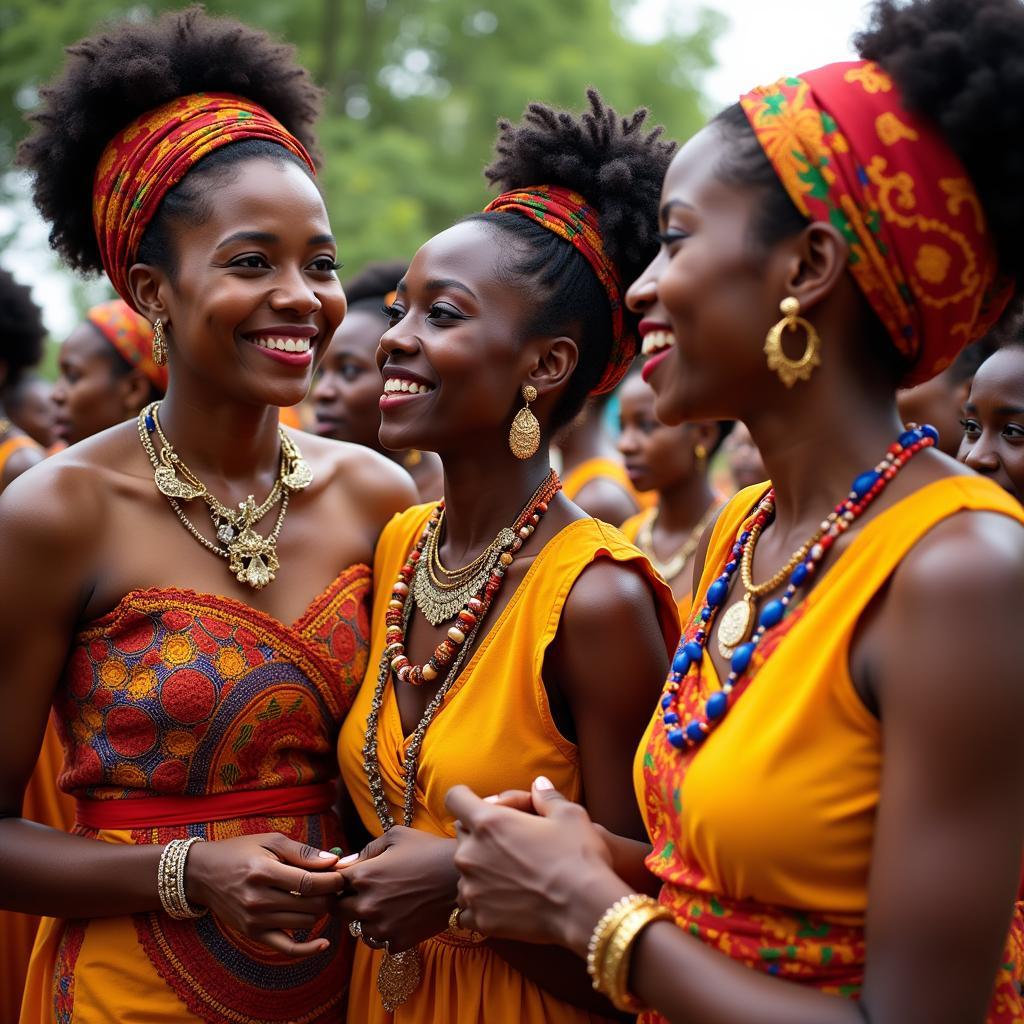The Vibrant World of South African Dance
South African Dance is an explosion of energy, rhythm, and storytelling. From traditional dances passed down through generations to modern interpretations, this vibrant art form reflects the country’s rich cultural tapestry. With a fusion of African rhythms, European influences, and contemporary styles, South African dance captivates audiences worldwide.
A Tapestry of Traditions: Exploring Different South African Dances
South Africa boasts a diverse range of dances, each with its own unique history, significance, and movements. Let’s delve into some of the most prominent styles:
Indlamu: The Warrior Dance of the Zulu Nation
Indlamu, often referred to as the Zulu war dance, holds a prominent place in South African culture. This powerful and energetic dance form originated centuries ago as a way for Zulu warriors to showcase their strength and agility. Characterized by high kicks, stomping steps, and rhythmic chanting, Indlamu embodies the spirit and pride of the Zulu people.
 Zulu Warriors Performing Indlamu Dance
Zulu Warriors Performing Indlamu Dance
Gumboot Dance: From Mines to Main Stage
Originating in the gold mines of South Africa, Gumboot dance emerged as a unique form of expression among mineworkers. Prohibited from speaking different languages, the miners developed a system of communication through rhythmic stomping and slapping their wellington boots, known as gumboots. This captivating dance style has transcended its origins, gaining recognition for its innovation and impact on South African dance.
Xibelani: Celebrating Femininity and Tradition
Hailing from the Tsonga people, Xibelani is a vibrant dance performed by women. The dance is characterized by the distinctive Xibelani skirt, adorned with colorful fabric strips that create a mesmerizing swaying motion as the women move. Xibelani celebrates femininity, cultural heritage, and the joy of music and dance.
Pantsula: Dance of the Urban Landscape
Pantsula emerged in South African townships during the apartheid era. This energetic and expressive dance style combines elements of tap, jazz, and traditional African movements. Pantsula became an outlet for young people to voice their struggles, aspirations, and experiences within the urban landscape.
The Significance of Dance in South African Culture
Dance is deeply intertwined with South African culture, serving as a powerful form of expression, storytelling, and social commentary.
A Celebration of Heritage and Identity
Traditional dances are a testament to the rich cultural heritage of South Africa’s diverse ethnic groups. Each dance form reflects unique customs, beliefs, and rituals, passed down through generations as a means of preserving cultural identity.
 South African Dancers in Traditional Attire
South African Dancers in Traditional Attire
A Platform for Social Commentary
Dance has played a crucial role as a form of protest and resistance throughout South Africa’s history. During the apartheid era, dance provided an outlet for marginalized communities to express their frustrations, share their stories, and challenge oppressive systems.
A Catalyst for Unity and Reconciliation
In post-apartheid South Africa, dance has emerged as a unifying force. By bringing together people from diverse backgrounds, dance promotes cross-cultural understanding, fosters a sense of shared identity, and contributes to healing and reconciliation.
Experiencing the Magic of South African Dance
Where to Witness South African Dance
If you’re interested in African countries beginning with e, you’ll find that dance is an integral part of their cultural fabric. You can experience the magic of South African dance in various settings:
- Cultural Villages: Many cultural villages across South Africa offer captivating traditional dance performances.
- Theaters: Major cities host professional dance companies showcasing contemporary and fusion styles.
- Community Events: Local festivals and gatherings often feature traditional dance performances.
 South African Dance Performance on Stage
South African Dance Performance on Stage
Learning the Moves: South African Dance Classes
For those inspired to learn, many dance schools and studios offer classes in various South African dance styles, from traditional to contemporary.
South African Dance: A Global Phenomenon
South African dance has gained international recognition, captivating audiences worldwide with its energy, rhythms, and storytelling. From the electrifying performances of companies like Via Katlehong to the influence on contemporary dance forms, South African dance continues to inspire and leave its mark on the global stage.
Conclusion
South African dance is a vibrant tapestry woven from history, culture, and boundless creative expression. From traditional dances passed down through generations to modern interpretations pushing boundaries, this captivating art form offers a window into the soul of South Africa. Whether you’re captivated by the warrior spirit of Indlamu or the rhythmic storytelling of Gumboot dance, exploring the world of South African dance is an unforgettable experience.
FAQs About South African Dance
1. What is the most famous South African dance?
Indlamu, the Zulu war dance, is perhaps the most internationally recognized South African dance, known for its powerful movements and cultural significance.
2. What are the characteristics of South African dance?
South African dance is generally characterized by energetic footwork, rhythmic movements, and vibrant music. Storytelling and cultural expression are often central to the dances.
3. What is the significance of traditional attire in South African dance?
Traditional attire plays a crucial role in many South African dances, reflecting cultural identity, heritage, and the specific significance of the dance.
4. How has South African dance evolved over time?
While traditional dances remain integral to South African culture, contemporary dance forms have emerged, incorporating global influences while maintaining a strong connection to heritage.
5. What is the role of music in South African dance?
Music is inseparable from South African dance. The rhythms, songs, and melodies provide the foundation for the movements, enhance the storytelling, and elevate the emotional impact.
Learn More About South Africa
If you enjoyed learning about South African dance, explore more about this fascinating country:
- Discover the African zulu dance traditions and their captivating rituals.
- Explore the electrifying world of African hot dance styles.
- Immerse yourself in the diverse sounds of African gingle wav music.
- Delve into a comprehensive African culture summary to expand your knowledge.
Contact us for any inquiries or assistance. Our team is available 24/7 to help you:
Phone Number: +255768904061
Email: [email protected]
Address: Mbarali DC Mawindi, Kangaga, Tanzania.

